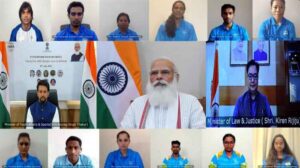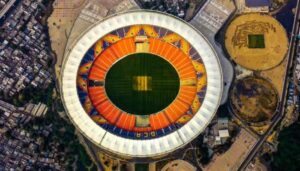Prime Minister Narendra Modi today inaugurated India’s first driverless metro train operations on Delhi Metro’s Magenta Line along with the fully operational National Common Mobility Card service on the Airport Express Line via video conferencing. Union Civil Aviation Minister Hardeep Puri and Delhi Chief Minister Arvind Kejriwal also attended the event.
“The inauguration of the first driverless metro train shows how fast India is moving towards smart systems. Today Delhi Metro is being connected to the National Common Mobility Card. A few decades ago, when the impact of urbanisation and the future of urbanisation were both clear, the country saw a different attitude,” said PM Modi.
What does driverless metro train mean?
The driverless trains will be fully automated, which will eliminate the possibility of human error, the government has said, adding that after the start of driverless services on the Magenta Line (Janakpuri West-Botanical Garden), the Pink Line (Majlis Park-Shiv Vihar) of Delhi Metro is expected to have driverless operations by mid-2021.
He added that in 2014, only 5 cities had metro rail and today, metro rail is available in 18 cities. By the year 2025, we are going to expand it to more than 25 cities. “First metro in Delhi was started with the efforts of Atal Ji. When our government was formed in 2014, only 5 cities had metro services and today 18 cities have metro rail service. By 2025, we will take this service to more than 25 cities,” PM Modi said.
‘Make In India essential for expansion of metro’
“Make In India is very important for the expansion of metro services. It reduces cost, saves foreign currency and provides more employment to people,” he added. Today, four big companies are manufacturing metro coaches in the country and dozens of companies are engaged in the manufacture of metro components. This is helping Make in India as well as the campaign for self-reliant India.
PM Modi lists out metro expansion details across India
The Prime Minister listed different types of metro rail on which work is being carried out. On the Regional Rapid Transit System (RRTS) between Delhi and Meerut, the Prime Minister said it will reduce the distance of Delhi and Meerut to less than an hour. He said in cities where passenger numbers are less, work is being done on the MetroLite version. MetroLite version would be constructed at 40 percent cost of normal metro. He further added that Metro Neo is being worked in cities where the ridership is less. It would be built at the cost of 25 percent of the normal metro. Similarly, water metro would be an out of the box thinking. For cities where there are large water bodies, the water metro is now being worked on. This will provide last mile connectivity to the people near the islands.
Also Read: 5 big takeaways from PM Modi’s last Mann Ki Baat of 2020
Modi: Metro helps in curbing air pollution
The Prime Minister said the metro today is no longer just a medium of public transport but a great way to reduce pollution. Thousands of vehicles have been reduced from the road due to the metro network, which used to cause pollution and traffic jam.









Unified Pension Scheme (UPS): How it differs from NPS and OPS
India braces for heatwave: Top tips to stay safe in sweltering conditions
Flight cancelled or delayed? Guidelines you must know